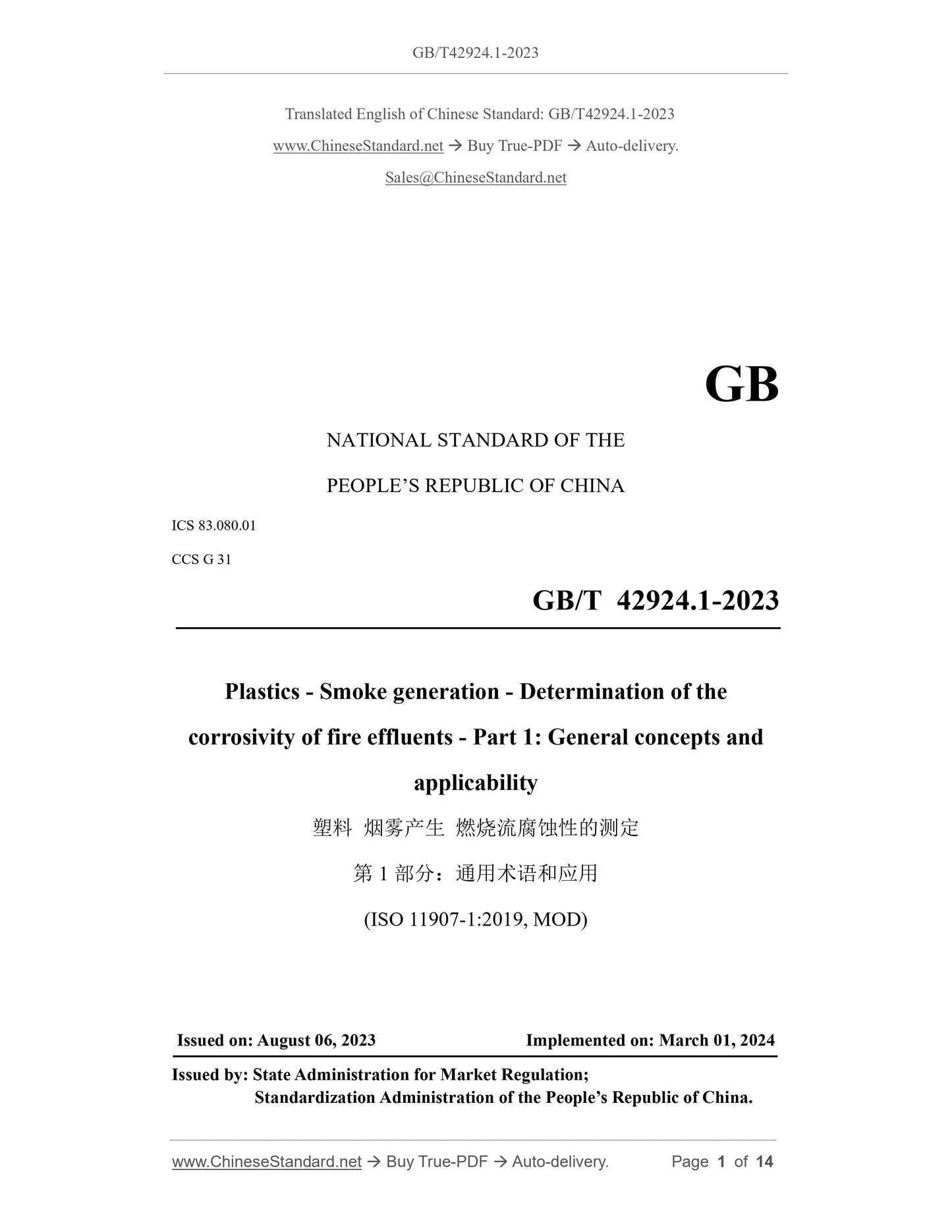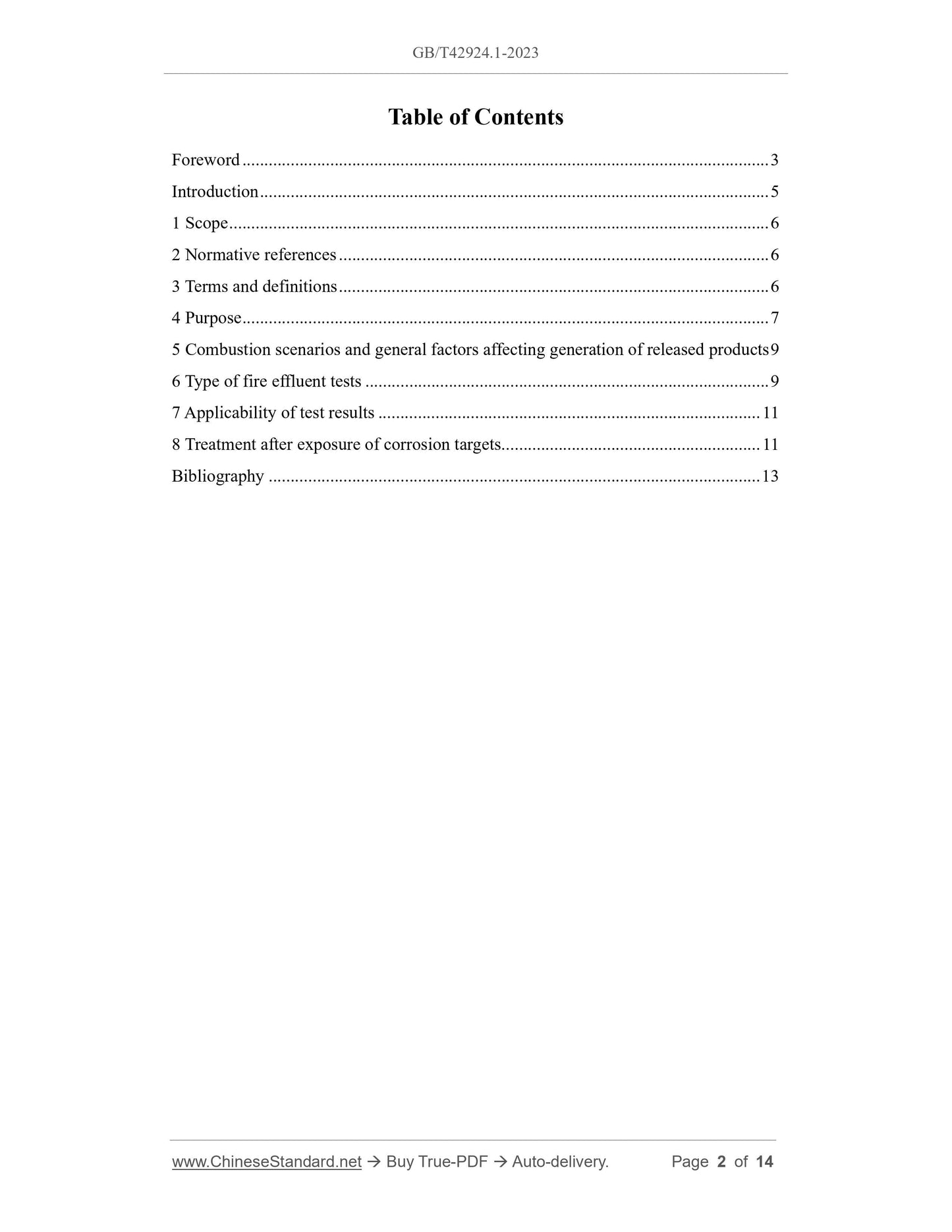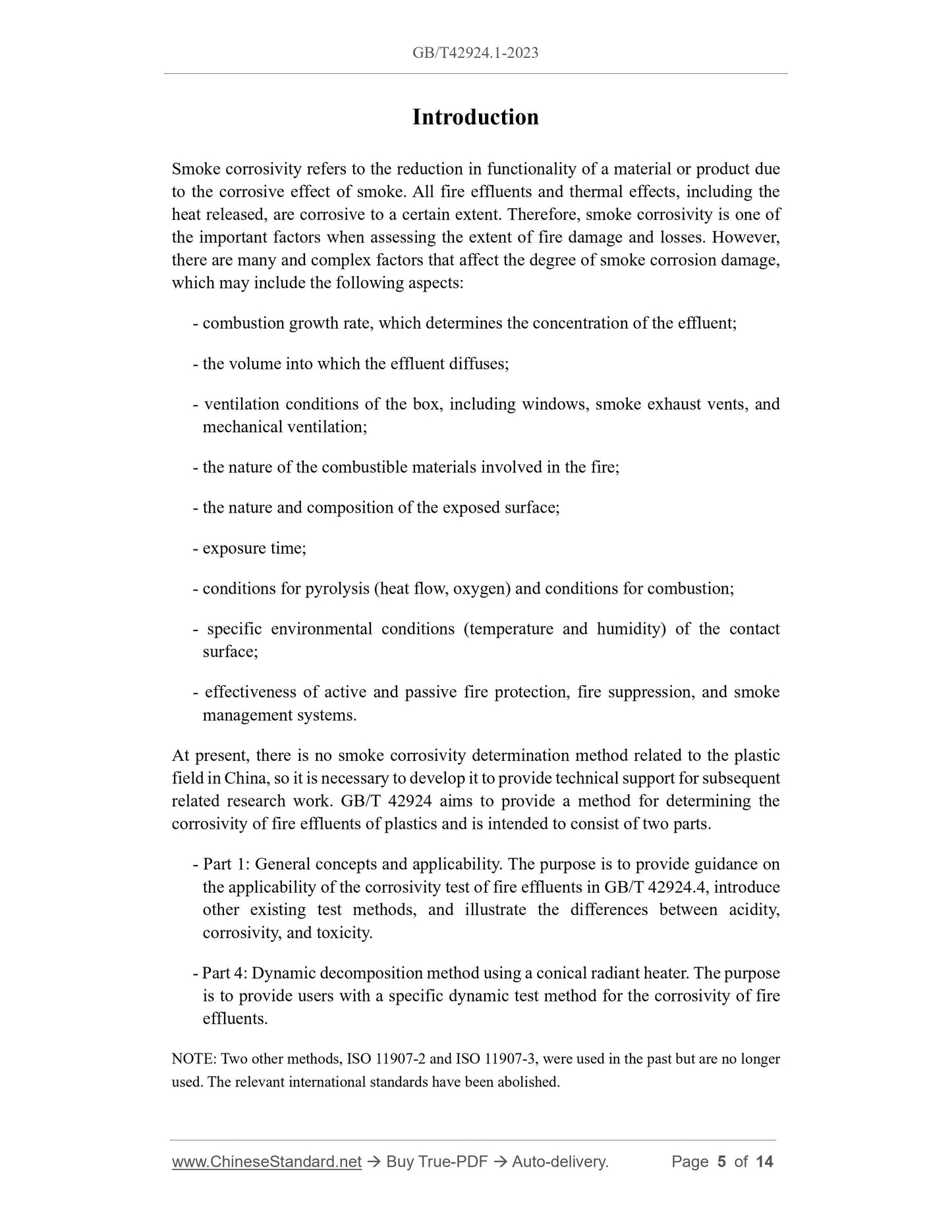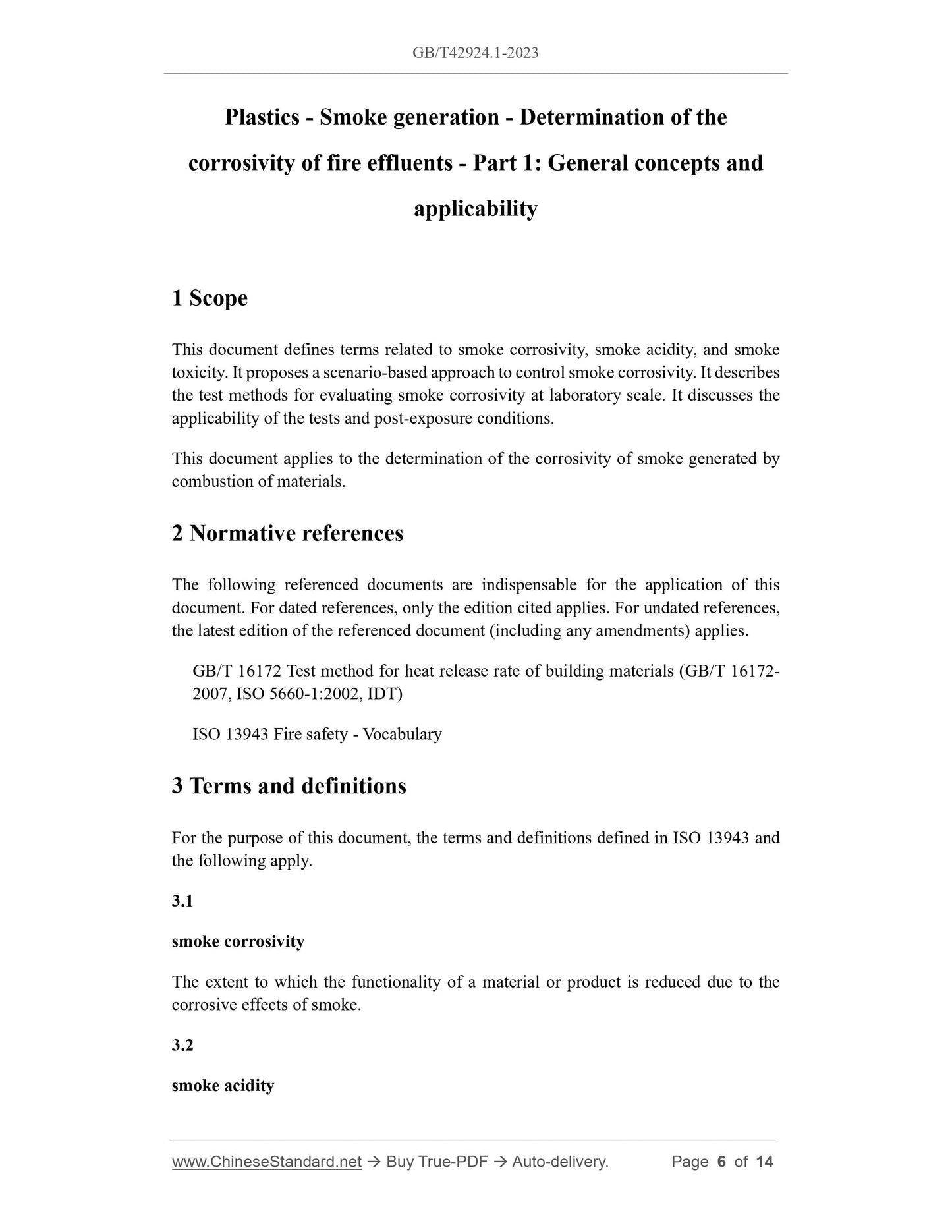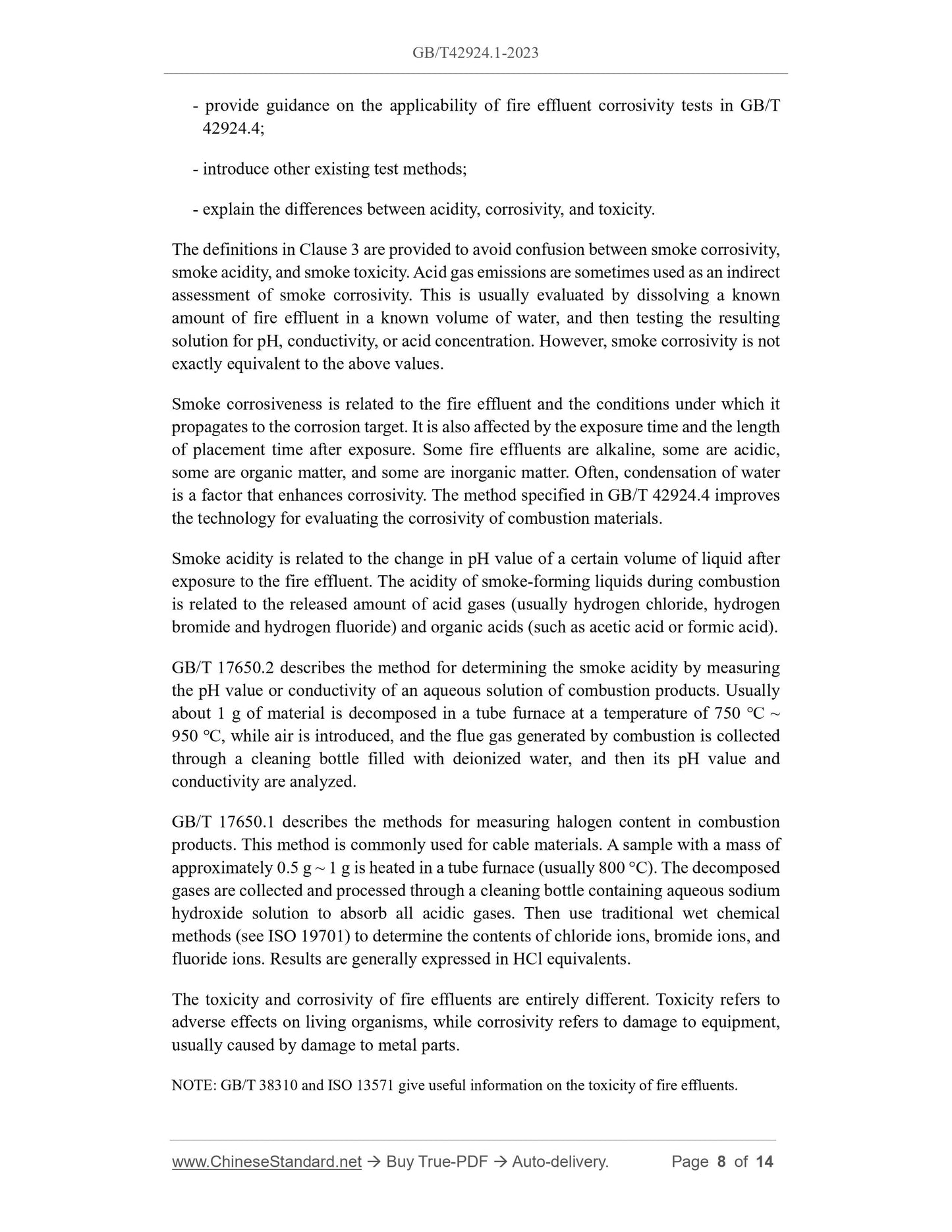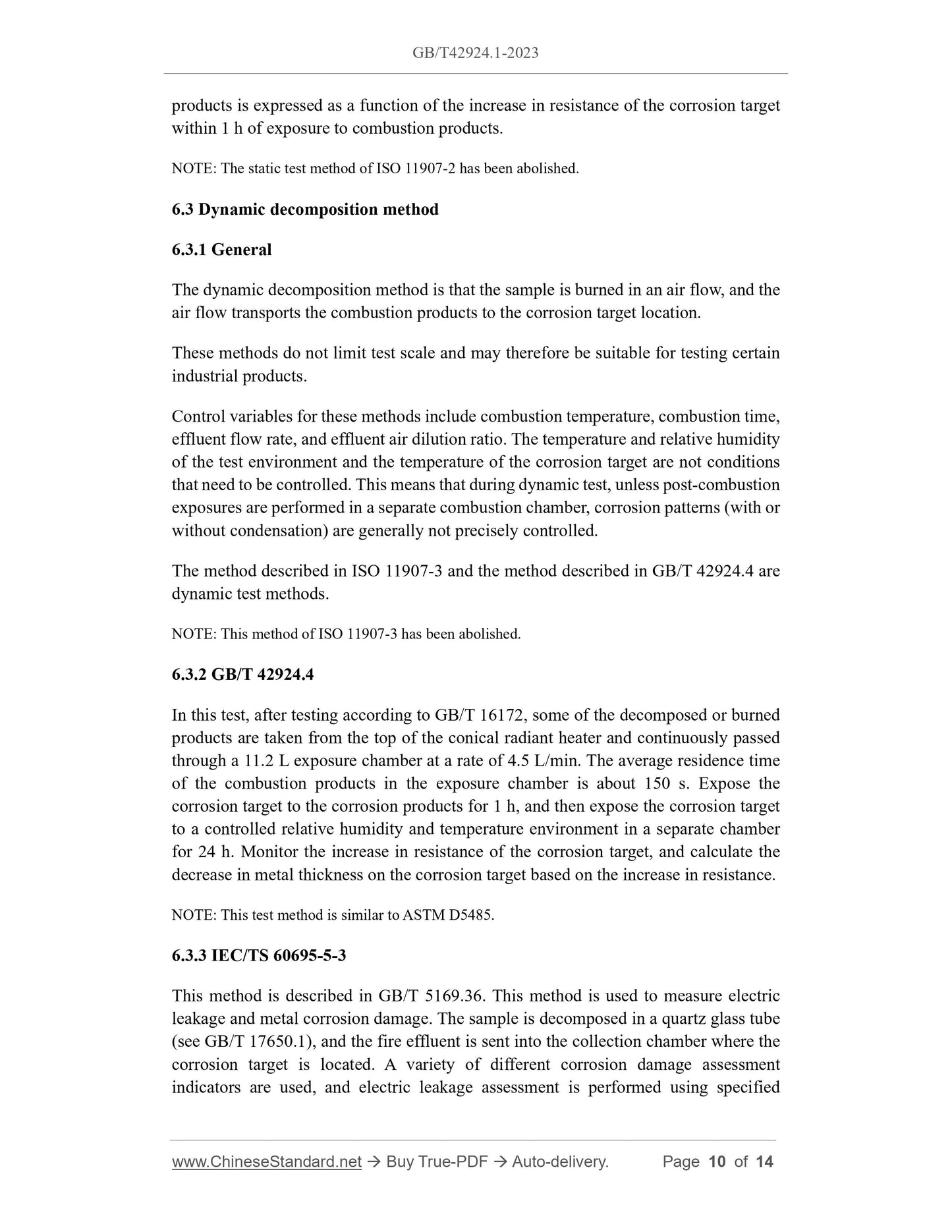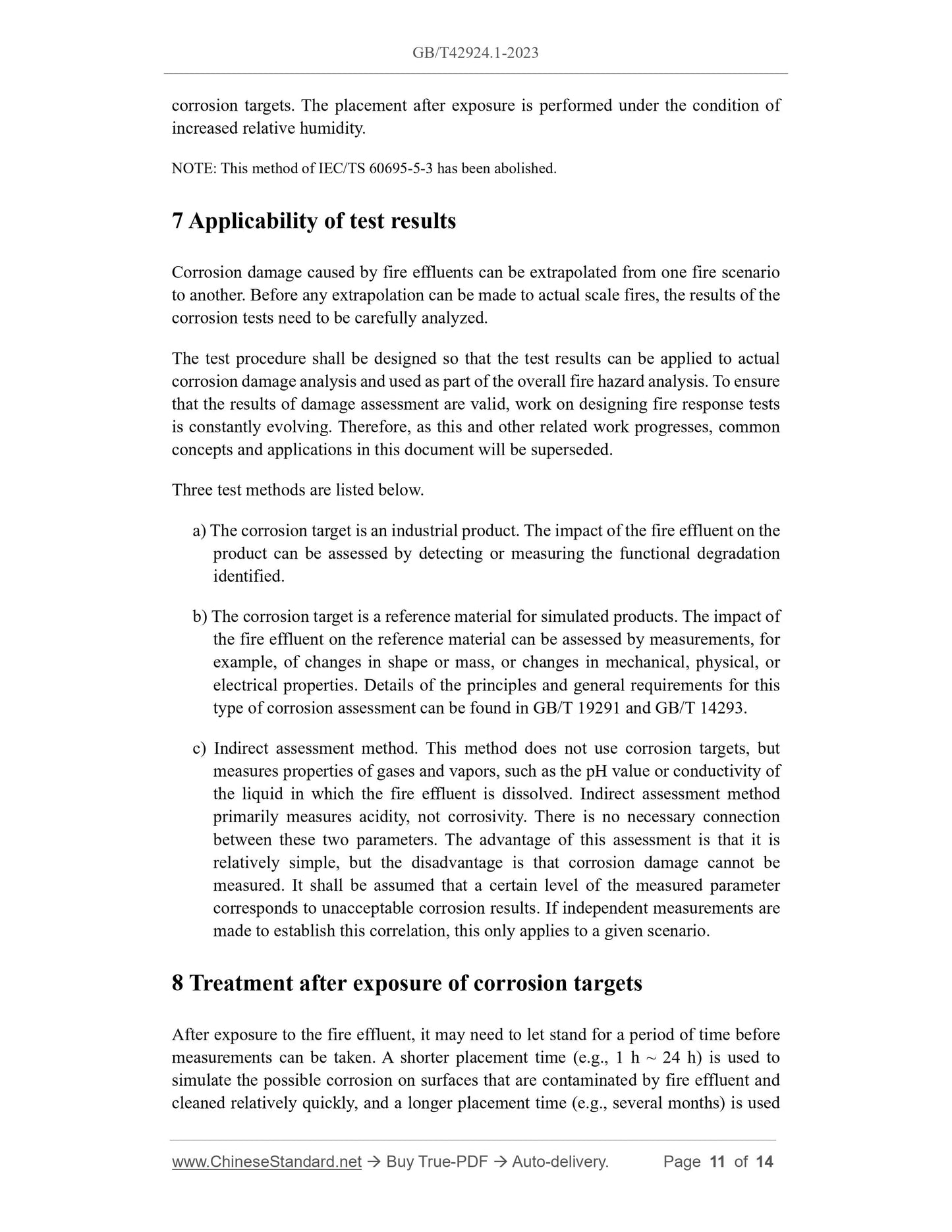1
/
of
7
www.ChineseStandard.us -- Field Test Asia Pte. Ltd.
GB/T 42924.1-2023 English PDF (GB/T42924.1-2023)
GB/T 42924.1-2023 English PDF (GB/T42924.1-2023)
Regular price
$175.00
Regular price
Sale price
$175.00
Unit price
/
per
Shipping calculated at checkout.
Couldn't load pickup availability
GB/T 42924.1-2023: Plastics - Smoke generation - Determination of the corrosivity of fire effluents - Part 1: General concepts and applicability
Delivery: 9 seconds. Download (and Email) true-PDF + Invoice.Get Quotation: Click GB/T 42924.1-2023 (Self-service in 1-minute)
Newer / historical versions: GB/T 42924.1-2023
Preview True-PDF
Scope
This document defines terms related to smoke corrosivity, smoke acidity, and smoketoxicity. It proposes a scenario-based approach to control smoke corrosivity. It describes
the test methods for evaluating smoke corrosivity at laboratory scale. It discusses the
applicability of the tests and post-exposure conditions.
This document applies to the determination of the corrosivity of smoke generated by
combustion of materials.
Basic Data
| Standard ID | GB/T 42924.1-2023 (GB/T42924.1-2023) |
| Description (Translated English) | Plastics - Smoke generation - Determination of the corrosivity of fire effluents - Part 1: General concepts and applicability |
| Sector / Industry | National Standard (Recommended) |
| Classification of Chinese Standard | G31 |
| Classification of International Standard | 83.080.01 |
| Word Count Estimation | 10,126 |
| Date of Issue | 2023-08-06 |
| Date of Implementation | 2024-03-01 |
| Issuing agency(ies) | State Administration for Market Regulation, China National Standardization Administration |
Share
